On View
Artist Rewires Phone Booths in Times Square to Tell the Poignant Tales of Immigrants
Listen to stories from 70 immigrant New Yorkers at this new installation.
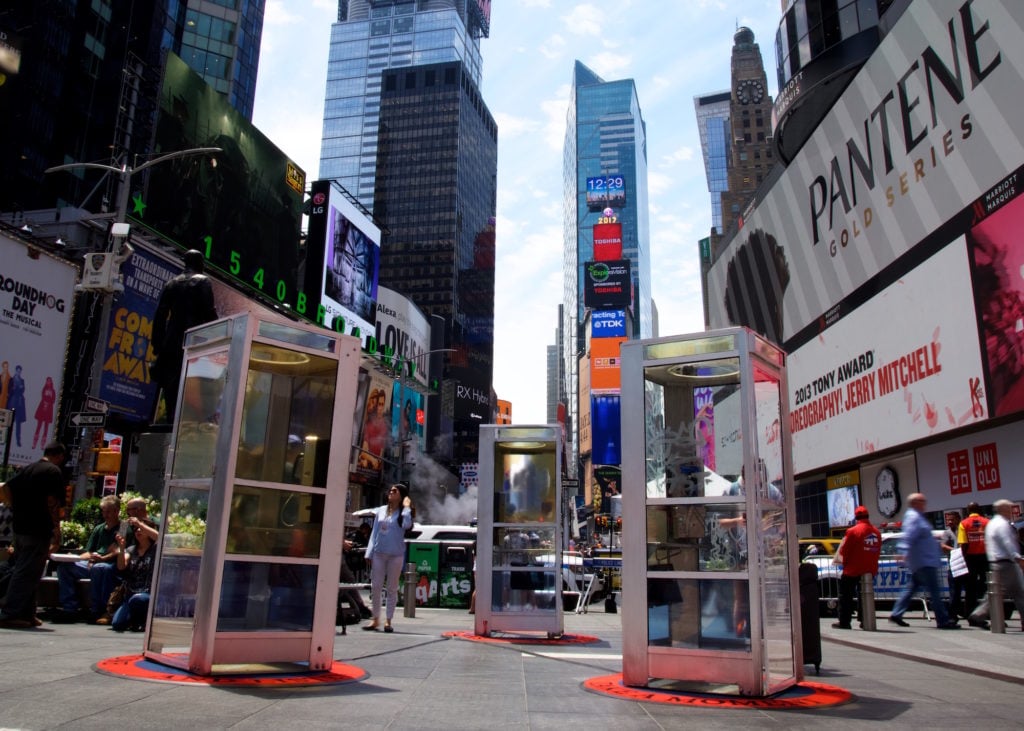
Listen to stories from 70 immigrant New Yorkers at this new installation.

Sarah Cascone

Phone booths may be relics of bygone New York, but one man wants to make them relevant again. Afghan-American artist Aman Mojadidi has planted three phone booths—now nearly extinct within the five boroughs—in the heart of Times Square for his interactive public art installation Once Upon a Place (2017). Pick up the phone, and you can hear the stories of city’s immigrants, an oral history of their personal journeys.
The artist has been working on bringing the piece to life for three years. (Before Times Square Arts got involved, Mojadidi envisioned setting up phone booths all over the city.) But the project has added resonance now, in the face of Donald Trump’s election and the restrictive immigration policies his administration is pursuing.
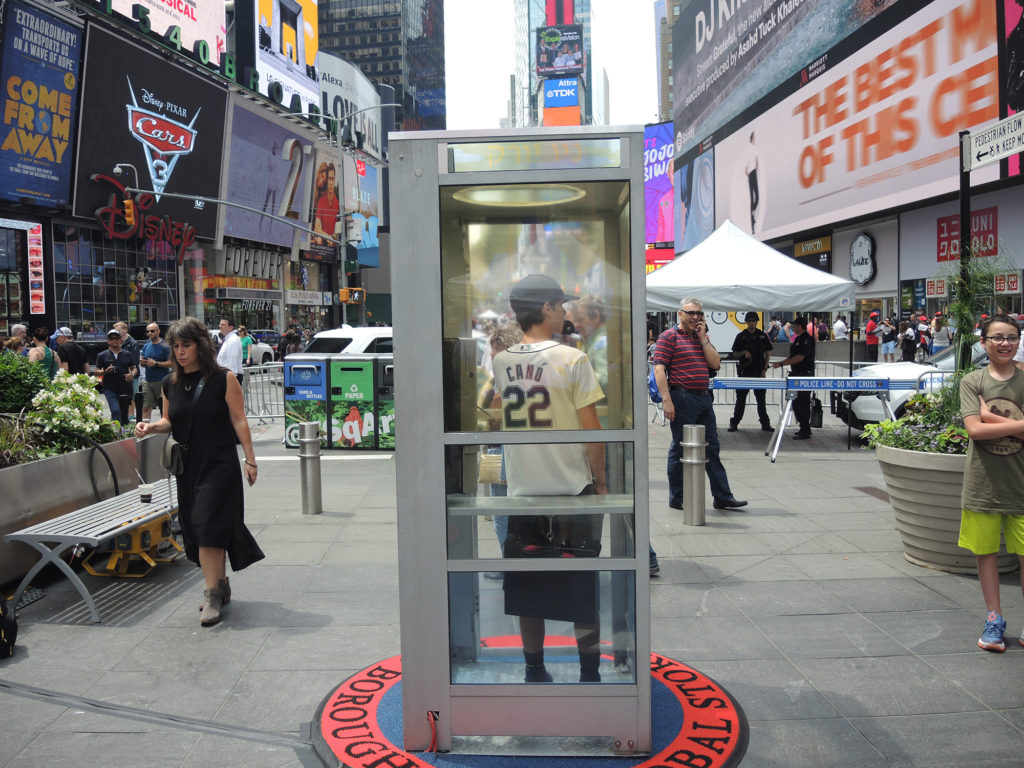
Aman Mojadidi, Once Upon a Place, in New York’s Times Square. Courtesy of Sarah Cascone.
“I’m quite pleased to see Once Upon a Place realized in this moment of anti-immigrant hysteria,” Mojadidi told artnet News. “There’s so much going on in the terms of raids and deportations, I couldn’t have asked for a better time for the project to have happened.”
“Times Square Arts has never done a project that is more important, more timely, and more powerful,” said Tim Tompkins, president of the Times Square Alliance, at a press preview unveiling the project. “This is a political battle and a political issue, and this magnificent work of art speaks to that.”

Aman Mojadidi in front of his installation Once Upon a Place in New York’s Times Square. Courtesy of Sarah Cascone.
The artist, who was born to immigrant parents, finds it bizarre that goods and products can traverse borders freely, where people often cannot. “The world has become so globalized,” Mojadidi said. “Trying to stick to these old ideas of borders is something that’s just not realistic anymore.”
In preparation for the project, Mojadidi spent a month researching immigrant neighborhoods across the city, doing outreach at mosques, synagogues, and community centers where he thought he might find participants. For two months, he recorded the stories of the men and women who have left their homeland for New York City, often meeting with them one-on-one.
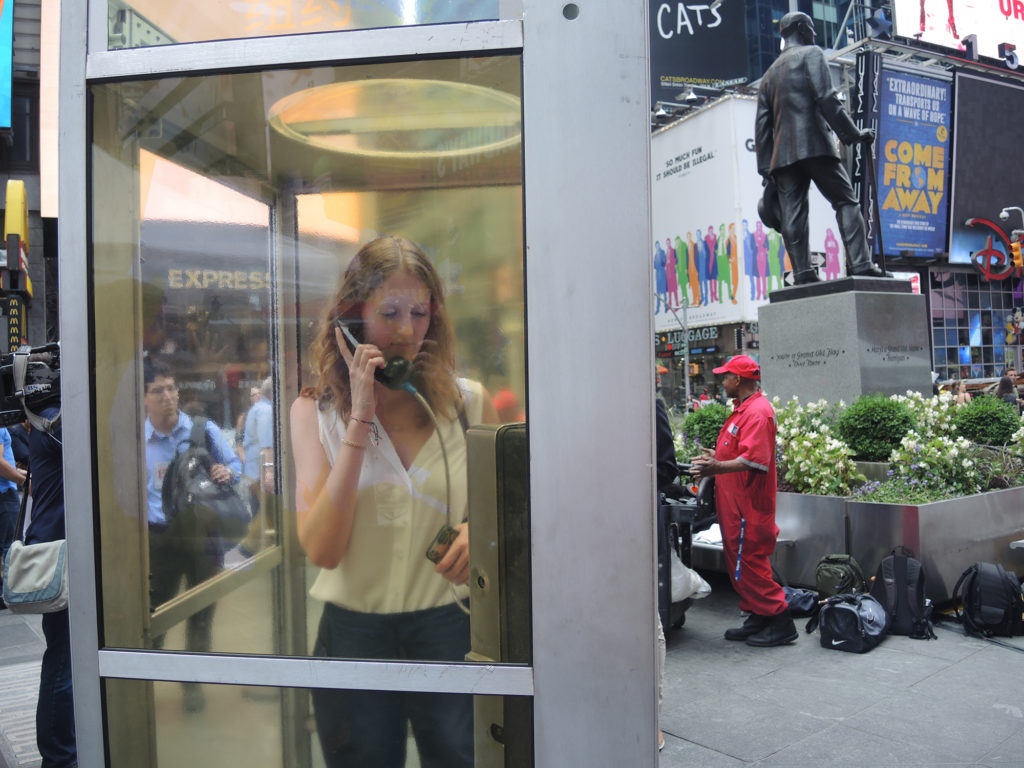
Aman Mojadidi, Once Upon a Place, in New York’s Times Square. Courtesy of Sarah Cascone.
“I wanted people to understand that cities like New York, great metropolitan cities around the world, are largely built by the immigrants who come there, work there, settle there, live there,” Mojadidi explained. “None of that should be anything that’s feared, but something that should be celebrated and accepted.”
He hopes that the piece can remind people of the inherent humanity of immigrants. In the era before cell phones, phone booths were a refuge, a place where you could step inside and create an instant connection to friends, families, and loved ones. For Mohadidi, the phone booth lent itself naturally to the intimate nature of the project.
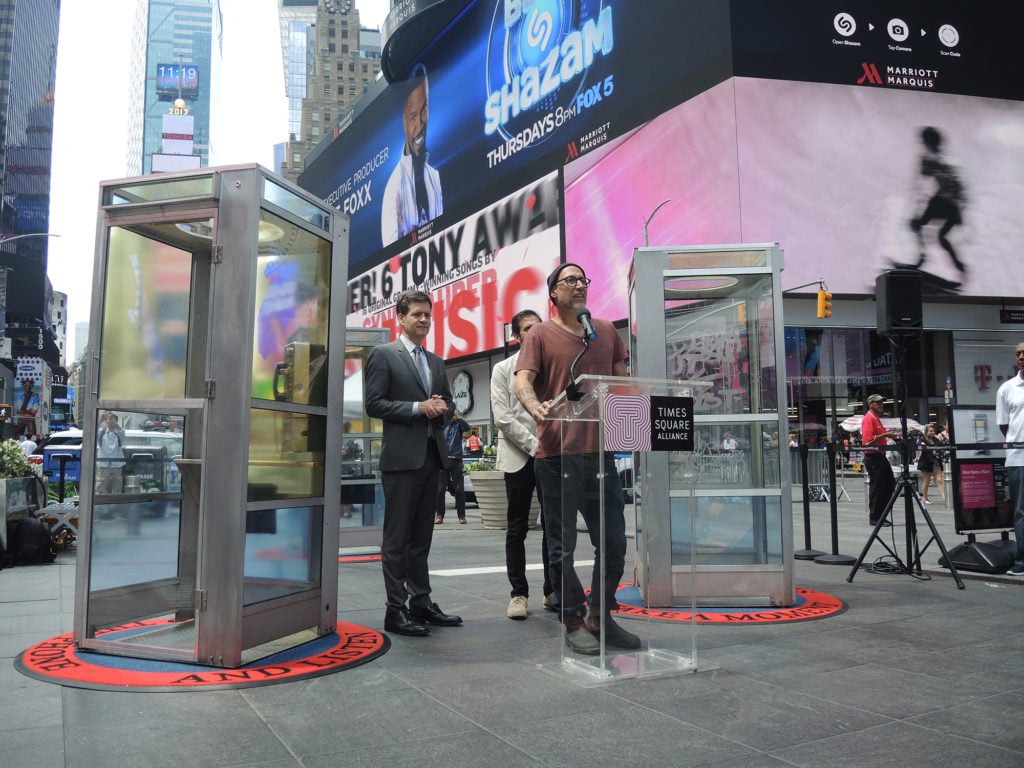
Democratic state senator Brad Hoylman, Times Square Alliance president Tim Tompkins, and artist Aman Mojadidi at his installation Once Upon a Place in New York’s Times Square. Courtesy of Sarah Cascone.
“I was thinking about all the stories that were trapped inside these phone booths from people who had made phone calls and told their stories already,” he said. “I figured it would be nice to bring these booths back for a different kind of story.”
For those wondering, there are still four phone booths on West End Avenue, but they were replaced with more modern versions in early 2016. When plans to turn roughly 6,400 stations booths into LinkNYC WiFi kiosks were announced in 2014, the company promised to retain those select few on the Upper West Side out of nostalgia.

Aman Mojadidi, Once Upon a Place, in New York’s Times Square. Courtesy of Sarah Cascone.
Mojadidi picked up the retired booths from LinkNYC, where they had fallen into disrepair, full halfway to the top with dirt and garbage. After a careful refurbishment—he had to manufacture new doors, and replace the missing phones—the booths are back in business, sharing the stories of 70 immigrant New Yorkers from Bangladesh, Belgium, Burkina Faso, Cameroon, China, Colombia, Dominican Republic, Egypt, Gambia, Ghana, Ireland, Israel, Italy, Japan, Jordan, Liberia, Mexico, Nigeria, Philippines, Puerto Rico, Russia, Sierra Leone, Spain, Sri Lanka, Tibet, and Yemen.
The installation’s opening came a day after the Supreme Court allowed parts of Trump’s controversial travel ban to be enacted, pending a final decision on the issue in October.
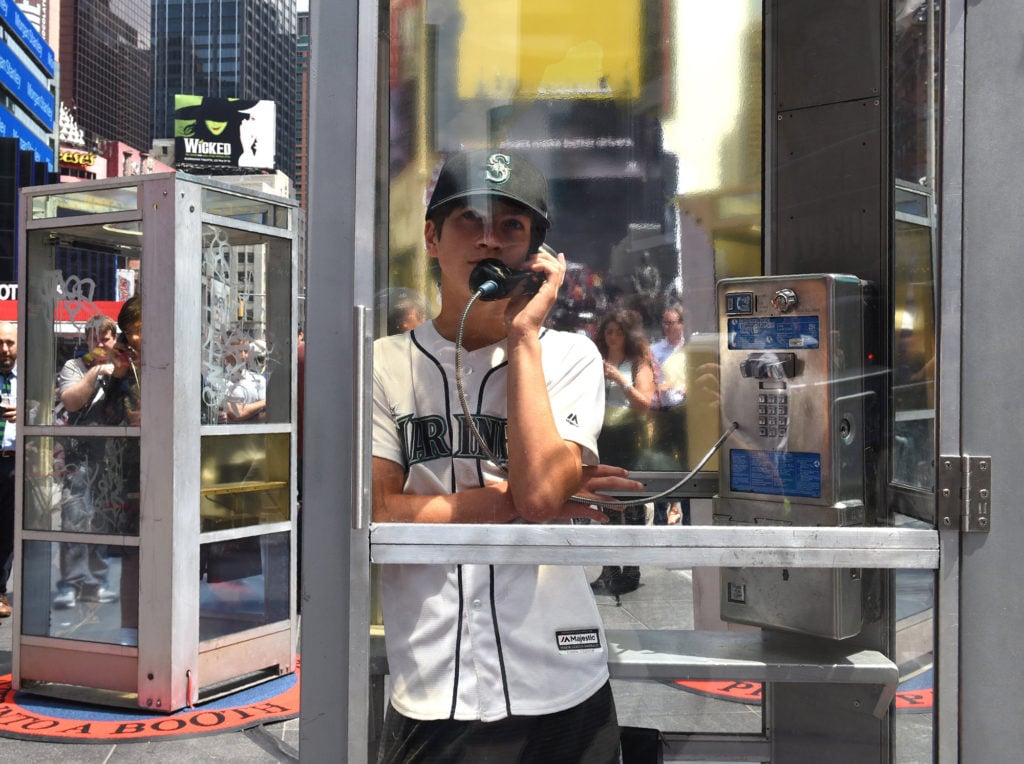
Aman Mojadidi, Once Upon a Place, in New York’s Times Square. Courtesy of Timothy A. Clary/AFP/Getty Images.
“The far right is trying very hard,” noted Mohadidi, “but I don’t think they’ll succeed in implementing the entire travel ban because it’s obvious to the majority of people, including judges, that it has nothing to do with safety and security. It only has to do with the kind of anti-immigrant xenophobic policies of a racist president.”
“We’re fighting tooth and nail to make sure that immigrants know that New York City’s doors remain open, not withstanding Washington, Donald Trump, immigration bans based on race, ethnicity, religion. We reject that as Americans. We reject that as elected officials representing this diverse neighborhood,” said Brad Hoylman, a Democratic state senator for New York’s 27th district, at the opening. “It is so important that we embrace the expression of arts and culture that tell the stories that you’re going to be hearing in these installations.”

Aman Mojadidi, Once Upon a Place, in New York’s Times Square. Courtesy of Sarah Cascone.
“What this work represents is America and the American experience, and how fitting that it is here at the crossroads of America,” he added. “New York City is the capital for immigration, and we want to keep it that way.”
“Aman Mojadidi: Once Upon a Place” is on view in Times Square, Duffy Square, 7th Ave and West 47th Street, New York; June 27–September 5.